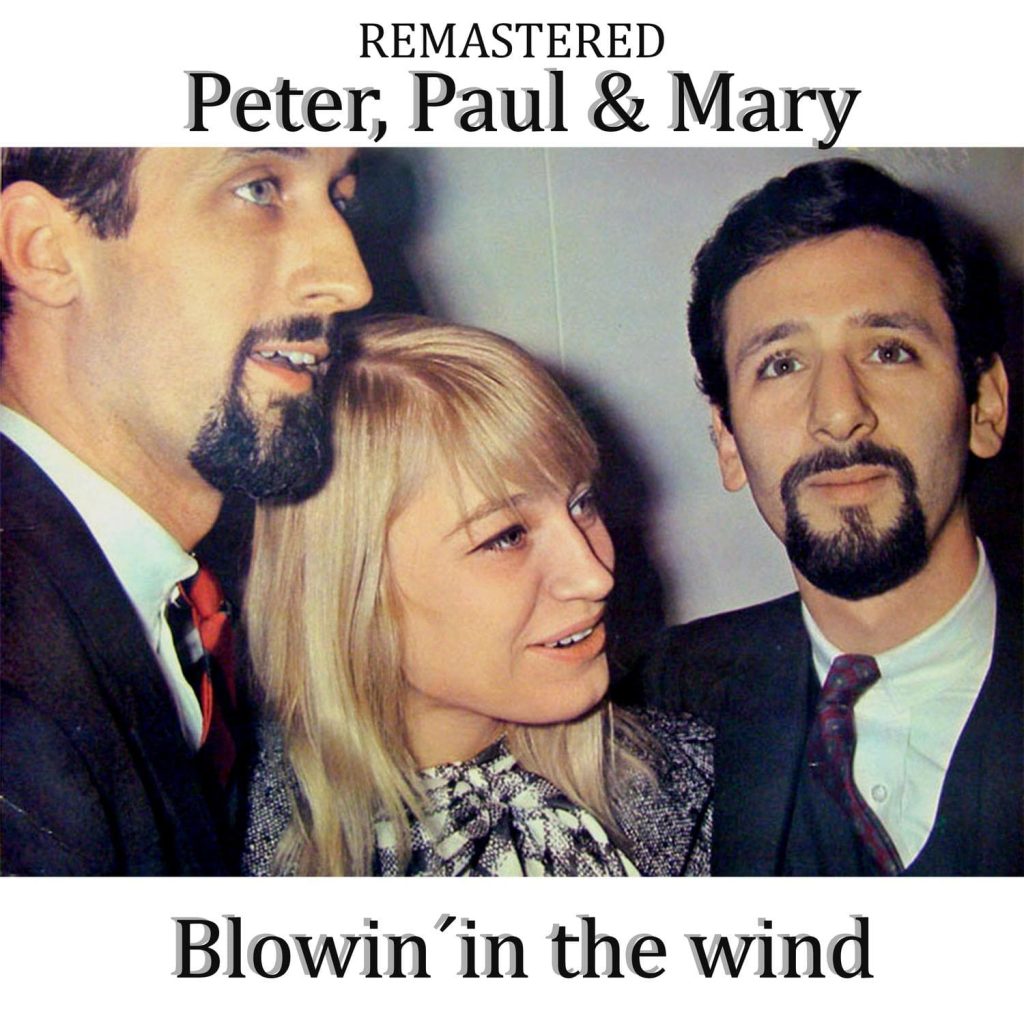
Peter, Paul and Mary’s “Blowin’ in the Wind”: A Folk Anthem for a Generation
“Blowin’ in the Wind” by Peter, Paul and Mary stands as one of the most poignant and enduring songs in the history of folk music. Although originally written by Bob Dylan in 1962, it was Peter, Paul and Mary who helped bring this song to a broader audience, turning it into an anthem for social change and a call for peace during one of the most turbulent times in American history. Released in 1963 as part of their album In the Wind, their rendition of “Blowin’ in the Wind” not only topped the charts but also captured the spirit of the civil rights movement and the longing for peace that defined the era.
The beauty of “Blowin’ in the Wind” lies in its simplicity—both in its musical arrangement and its lyrical content. Peter, Paul and Mary chose to present the song in a stripped-down, acoustic format that highlights the harmonies of Peter Yarrow, Paul Stookey, and Mary Travers. The trio’s voices blend seamlessly, creating a sound that is both haunting and uplifting, perfectly complementing the song’s message of hope and reflection.
Lyrically, “Blowin’ in the Wind” poses a series of rhetorical questions, each more profound than the last. Questions like “How many roads must a man walk down before you call him a man?” and “How many times must the cannonballs fly before they’re forever banned?” resonate with listeners, encouraging them to reflect on issues of freedom, justice, and peace. The refrain, “The answer, my friend, is blowin’ in the wind,” suggests that the solutions to these problems are elusive, perhaps even already known but ignored by society.
Peter, Paul and Mary’s interpretation of the song adds a layer of gentle urgency to Dylan’s words. Their harmonies give the song a sense of collective yearning, as if they are voicing the concerns of an entire generation. Mary Travers’s strong, clear voice stands out, lending the song a sense of authority and conviction. It’s as if she’s singing not just to the audience, but for them, articulating the deep frustrations and hopes of the 1960s.
When “Blowin’ in the Wind” was released as a single, it quickly became a hit, reaching number 2 on the Billboard Hot 100 in 1963. Its success was not just a testament to the trio’s musical talent, but also to the power of the song’s message. At a time when the civil rights movement was gaining momentum and the Vietnam War was beginning to escalate, “Blowin’ in the Wind” provided a voice for those who were searching for answers and demanding change.
Beyond its immediate impact, “Blowin’ in the Wind” has endured as a timeless piece of music that continues to inspire new generations. It’s a song that transcends its era, speaking to universal themes that remain relevant today. Whether in the context of war, civil rights, or any struggle for justice, the song’s questions are as pressing now as they were then.
Peter, Paul and Mary’s version of “Blowin’ in the Wind” is not just a cover—it’s a definitive rendition that has helped to cement the song’s place in the American musical canon. Their gentle yet powerful harmonies have ensured that this folk classic will continue to resonate, reminding us all that the answers we seek are often right in front of us, carried by the winds of change and the voices of those who dare to ask the difficult questions.
In the end, “Blowin’ in the Wind” is more than a song; it’s a piece of history, a reflection of a time when music had the power to change minds and hearts. Peter, Paul and Mary brought this song to life in a way that few others could, turning it into a beacon of hope and a call to action that still echoes through the years.